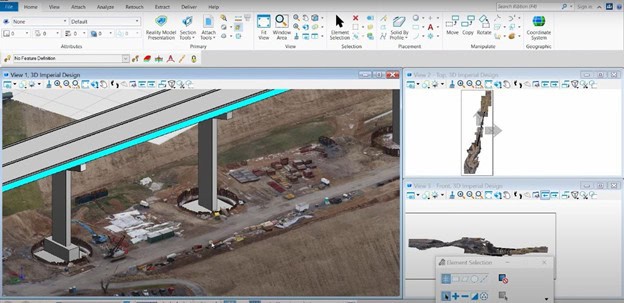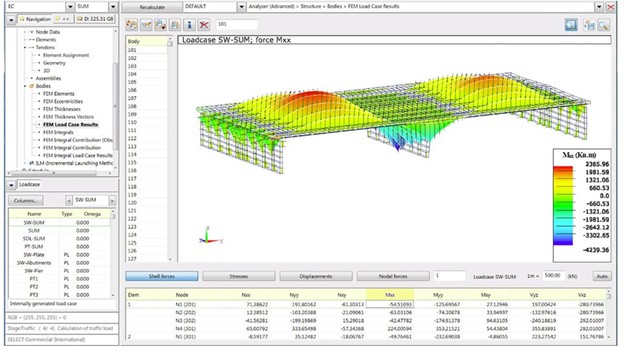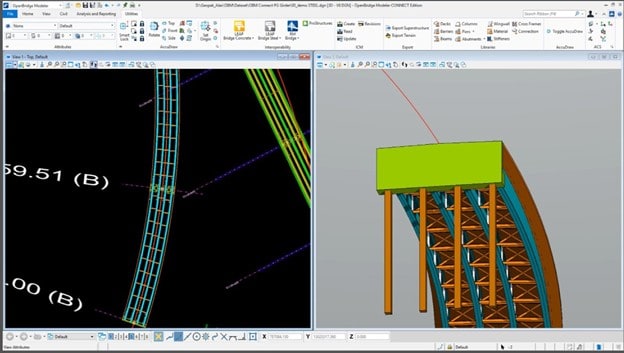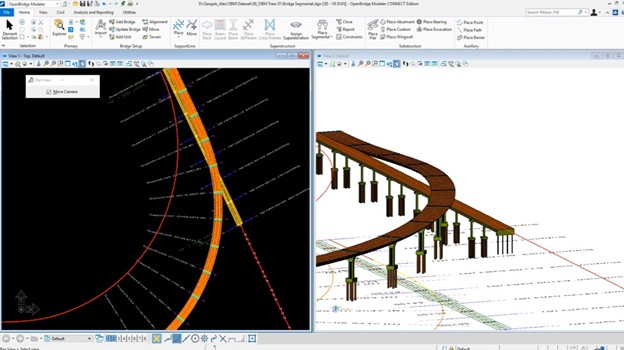The engineering landscape is quickly evolving, with advances in technology significantly enhancing the design and construction of complex infrastructure. Among the most pivotal tools revolutionizing bridge design is OpenBridge Designer, a comprehensive solution tailored to meet the needs of modern bridge engineers. This article explores the features, benefits, and practical applications of OpenBridge Designer, offering insights into how it can be leveraged to streamline bridge design and analysis.
What is OpenBridge Designer?
OpenBridge Designer is a powerful and integrated application designed for the modeling, analysis, and design of bridges. The software brings together the best capabilities of Bentley’s bridge engineering solutions, including LEAP Bridge and RM Bridge, into a single, unified platform. It supports both conventional and advanced bridge projects, accommodating a wide range of bridge types and design methodologies.
Key features of OpenBridge Designer
- Integrated workflows: OpenBridge Designer provides an integrated workflow that spans from concept and preliminary design through detailed design, analysis, and construction documentation. This integration ensures that data consistency is maintained across different stages of the project, minimizing errors and rework.

- Comprehensive analysis tools: The software includes sophisticated analysis tools that support the design of various bridge types, including concrete, steel, and composite structures. Engineers can perform static, dynamic, and seismic analyses, ensuring that the bridge design meets all necessary safety and performance standards.

- Parametric modeling: OpenBridge Designer offers parametric modeling capabilities, allowing engineers to create flexible, data-driven bridge models. Changes in design parameters are automatically reflected across the model, saving time and reducing potential for manual errors.

- Interoperability: The platform is built to be interoperable with other Bentley applications, such as OpenRoads Designer for road design and MicroStation for drafting and visualization. This interoperability enhances collaboration among different teams and disciplines, fostering a more cohesive project environment.

- Advanced visualization: OpenBridge Designer includes advanced visualization tools that enable engineers to create high-quality 3D renderings of bridge designs. These visualizations are useful for communicating design intent to stakeholders and for conducting virtual inspections before construction begins.

- Code compliance and standards: The software supports design codes and standards from around the world, including AASHTO, Eurocode, and others. This support ensures that designs are compliant with local regulations, reducing the risk of non-compliance issues during the approval process.
Practical applications of OpenBridge Designer
OpenBridge Designer has been used successfully in numerous high-profile bridge projects around the world. From complex cable-stayed bridges to simple girder bridges, the software’s versatility allows it to handle a wide range of projects. Engineers working on large infrastructure projects appreciate the software’s ability to handle large models and complex analysis tasks, while those working on smaller projects benefit from its intuitive interface and streamlined workflows.
Benefits of using OpenBridge Designer
- Enhanced efficiency: By providing a comprehensive suite of tools within a single platform, OpenBridge Designer streamlines the design process, reducing the time required to move from concept to construction. This efficiency is crucial in fast-paced project environments where timelines are tight.
- Improved accuracy: The integration of analysis, design, and documentation workflows within OpenBridge Designer minimizes the potential for discrepancies between different stages of the project. This integration leads to more accurate designs and reduces the likelihood of costly construction errors.
- Collaboration and coordination: The interoperability of OpenBridge Designer with other Bentley products, and its support for various file formats, enhance collaboration among different disciplines. This interoperability leads to better coordination across teams, reducing the risk of conflicts and ensuring that all aspects of the bridge design are aligned.
- Future-proofed design: With the ability to perform advanced analyses and comply with global standards, OpenBridge Designer positions engineers to design bridges that are not only compliant with current codes, but are also adaptable to future requirements and innovations.
As infrastructure demands grow, the need for efficient, accurate, and collaborative bridge design solutions becomes increasingly critical. OpenBridge Designer stands out as a comprehensive tool that not only meets these needs, but also sets the standard for future bridge engineering software. By integrating design, analysis, and documentation into a single platform, it empowers engineers to deliver better bridges, faster.
For bridge engineers looking to stay at the forefront of their field, adopting OpenBridge Designer is a strategic move that promises to enhance both the quality of their work and their ability to meet the challenges of modern bridge design. Whether you’re working on a major infrastructure project or a smaller-scale bridge, OpenBridge Designer is an essential tool that can help you achieve your goals efficiently and effectively.





